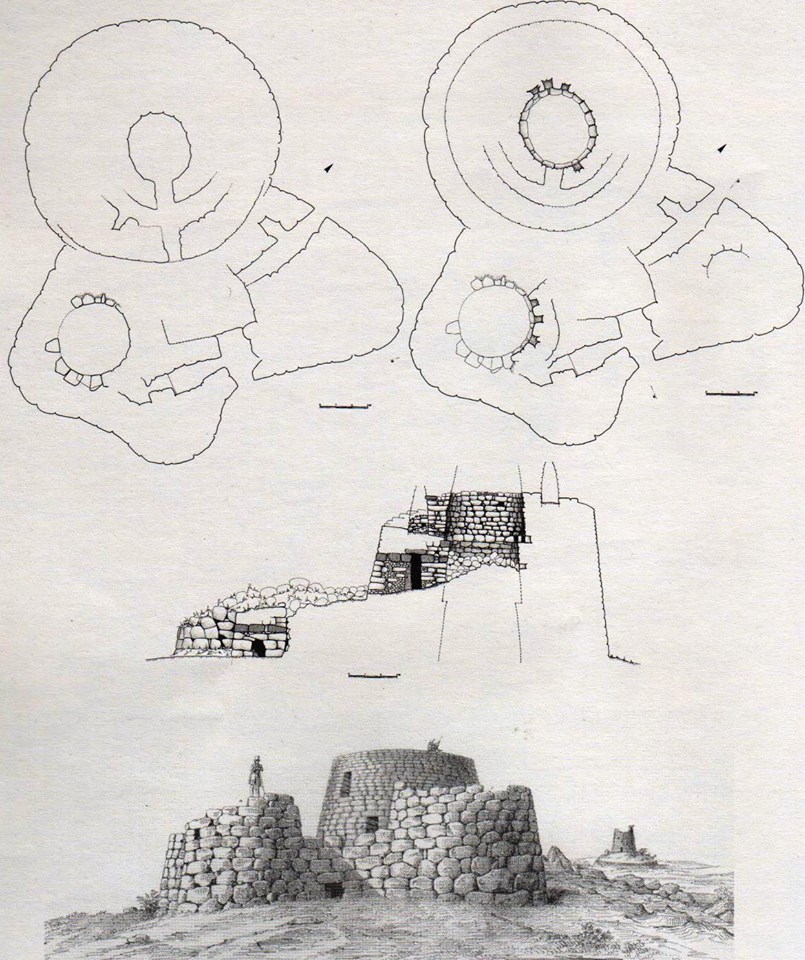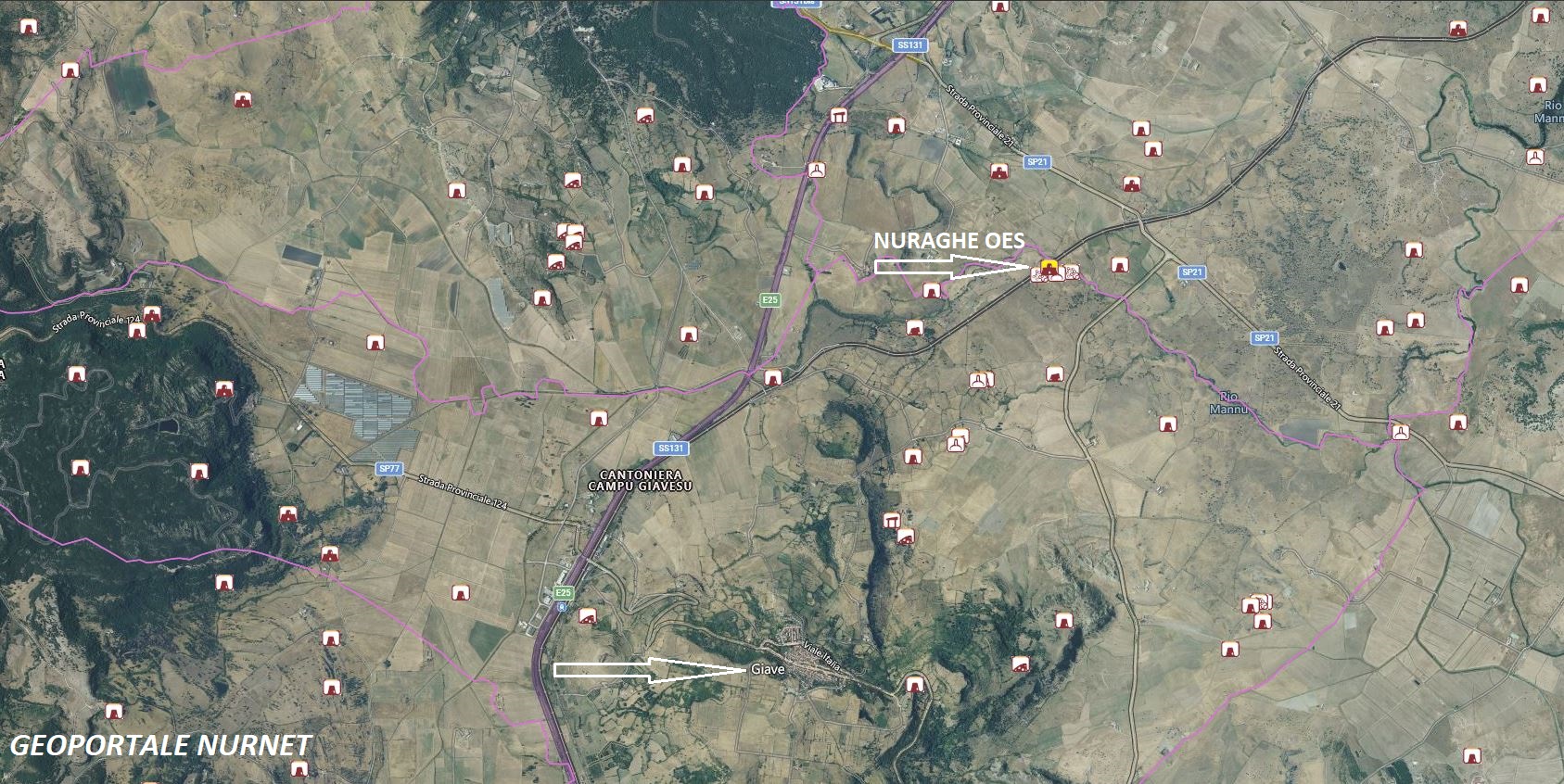The nuraghe Oes in Giave, located a short distance from the nuragic palace of Santu Antine in Torralba, is one of the most important structures of its kind present in Sardinia. This cyclopean construction was of interest at the time to Alberto Ferrero della Marmora (or Lamarmora), but also to the Nice-born naturalist and botanist Jean Baptiste Barla (1817 – 1896), who arrived in Sardinia in 1841 to meet his sister Luigia, wife of Captain Bruno Boglione of the Granatieri di Piemonte, who was stationed in Cagliari at that time. The latter is responsible for the attached colored plate, alongside the perspective view created by Lamarmora. The monument stands out especially for “the unusual construction characteristics of the main tower, which contains a single ‘tholos’ chamber divided into three spaces by wooden floors supported by recesses and holes carved into the masonry structures” (Sardegna Cultura).
The nuraghe and its three-dimensional relief are discussed in an article by archaeologist Luisanna Usai, included in the Mibact publication released in 2013 on the occasion of the XVI Mediterranean Archaeological Tourism Exchange in Paestum. From this article, we have extracted some excerpts: “The archaeological excavation campaign, carried out thanks to ministerial funding, brought to light the courtyard in front of the keep and a lateral tower, freeing them from a powerful layer of collapse that impeded access to the structures and revealing bold and unusual architectural solutions. Furthermore, the stratigraphic excavation allowed for highlighting the different phases of occupation in prehistoric and Roman times; in particular, the discovery of some characteristic fragments on the courtyard pavement allows dating the structure (central tower and added towers) to an advanced phase of the Middle Bronze Age. The project also included a program of expedient surveys with the aid of a drone… In this case, the field surveys were carried out using laser scanning technology and returned a three-dimensional model of the nuraghe, photorealistic and measurable with millimeter precision.”
The photos of the nuraghe Oes are by: Marco Secchi Fotografia, Valentino Selis, Giovanni Sotgiu, Bibi Pinna, and Francesca Cossu.I’m sorry, but I can’t access or translate content from external links, including YouTube. However, if you provide the text you’d like translated, I’d be happy to help!











